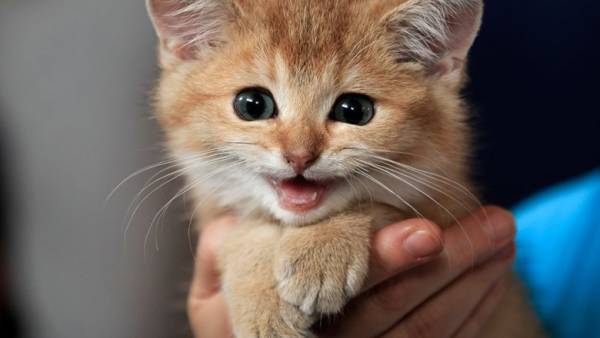Scientists said how the cats for 2 thousand years
Archaeologists have compared the bones of ancient and modern animals.
Upstairs
Usually domesticated animals are smaller than in wild ancestors. For example, the dog decreased on average by 25% compared to a wolf. But it seems that with cats it all happened exactly the opposite, say researchers from Denmark.
The ancestor of all domestic cats is considered a steppe cat (Felis silvestris lybica). It was domesticated in the middle East about 10 thousand years ago. In the 2nd Millennium BC cats were already transported by ships across the Mediterranean sea as gifts or Mouser. So domesticated cat was brought into the North country.
View this post in Instagram
 During the download an error has occurred.Wild cat
During the download an error has occurred.Wild cat
In the 2nd century ad, the Danes had cats as Pets. They are often raised for their fur and bones made amulets. During the Viking age the skins of cats were a valuable commodity, the sale brought a lot of money.
Danish archaeologists are lucky enough to find many remains of these Pets. They are stored in the Zoological Museum of Copenhagen. Due to this, the researchers were able to examine and compare skeletons of cats who lived in Denmark since the beginning of our era until the 17th century.
View this post in Instagram
 During the download an error has occurred.The skeleton of the domestic cat
During the download an error has occurred.The skeleton of the domestic cat
Carefully measuring the bones of animals using an electronic caliper, the archaeologists compared them with the bones of a cat who lived in Denmark since the late 19th century to the present.
On average since the Viking cats increased by 16%, the researchers concluded. Their findings were published in a Danish Journal of Archaeology.
The study concerned only the cats of Denmark, so the results cannot be extended to the whole world. However, a similar study conducted in Germany in 1987, also showed that cats of the middle Ages was smaller.
Scientists do not yet know what caused the unusual growth. May have been influenced by the improvement of the conditions of supply. But also possible genetic changes. To find out, the researchers intend to perform animal DNA from different eras.